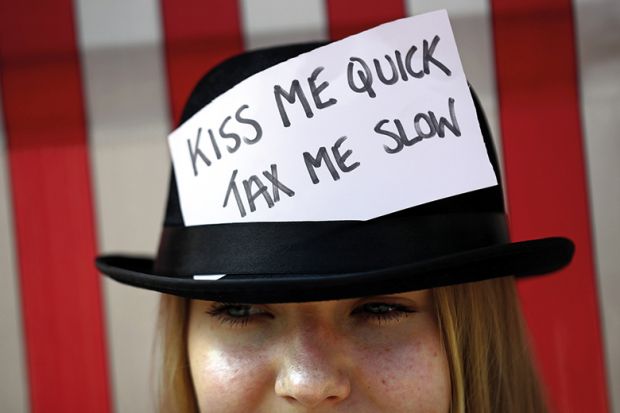It won’t come as much surprise that Milton Friedman, free-marketeer extraordinaire, wasn’t a believer in the free lunch.
Giving a lecture in the mid-1970s, he ripped into the idea that tax revenue could be raised from business – viewed as some sort of corporate cornucopia – without any impact on individuals.
“Only people can pay taxes,” he said. It might be the shareholder, the customer or the worker, but “there’s no Santa Claus, no tooth fairy…somebody has to pay”.
So it is for higher education: the question isn’t whether we should have free education, it is who should pay for it, and how?
Perhaps more surprising is that Friedman’s answer to this question was based firmly on the belief that a university education is not just a private good.
In fact, he is credited by some as being the father of income-contingent loans, often viewed as the best way to acknowledge the public and private benefits of study, to share the cost burden and to maintain quality.
A year or two ago, this view of income-contingent loans seemed increasingly unassailable.
Yet with a major funding review now under way in England, precipitated by the popularity of Labour’s opposition pledge to scrap tuition fees altogether, the deal now seems decidedly less done.
Who, then, should pay for higher education, how, and when? And how realistic and sustainable is fee-free education, building on the premise that tax receipts will outweigh the public outlay – and that even if they don’t it is a sensible investment for society to make?
In our cover story, we explore these questions through an Antipodean lens, focusing on New Zealand’s fee-free experiment to assess what it means for universities, students and employers.
To recap briefly, Jacinda Ardern, the country’s mould-breaking prime minister, has pledged to abolish tuition fees altogether. From this year, students who have completed less than six months of tertiary education will pay nothing for the first year, and by 2024 this will apply to a full three years.
For Ardern’s government, this is an essential investment in the country’s future.
As the education minister Chris Hipkins tells us, the arrival of the fourth industrial revolution means “we’ve reached the point where…secondary school education is no longer enough”.
Andreas Schleicher, director of education and skills at the Organisation for Economic Cooperation and Development, identifies four broad models for funding higher education: Scandinavia’s low fee/high public investment; continental Europe’s low fee/low public investment; England and Australia’s state-subsidised loan system; and the high fees funded through commercial loans that finance parts of the US system, South Korea and Japan.
Clearly the outputs and implications of these approaches vary: continental Europe struggles in the quality stakes; England is facing the aforementioned political crisis of confidence; Scandinavia’s system positions higher education more firmly as a public, rather than a private, good; while the US has a markedly divided system, with cash-strapped publics squeaking at the pips and debt-laden students in the for-profit sector left burdened – rather than set up – for life.
It hardly needs saying that there are no easy answers to the funding question. The New Zealand experiment is bold – but universities themselves will view it with some trepidation.
Friedman noted that “even the most ardent environmentalist doesn’t really want to stop pollution. If he thinks about it…he wants to have the right amount of pollution.
“We can’t really afford to eliminate it – not without abandoning all the benefits of technology that we not only enjoy but on which we depend.”
It may be a slightly unfortunate metaphor, but even the most ardent advocate of low-cost education does not want to see the quality of provision run into the ground by underinvestment.
There will always be arguments about the right funding level. But it is not only New Zealand’s universities that will be desperately hoping Ardern’s government finds a settlement that maintains their undoubted excellence. The country’s students and society more broadly depend on it, too.
POSTSCRIPT:
Print headline: Free lunch? If only...
Register to continue
Why register?
- Registration is free and only takes a moment
- Once registered, you can read 3 articles a month
- Sign up for our newsletter
Subscribe
Or subscribe for unlimited access to:
- Unlimited access to news, views, insights & reviews
- Digital editions
- Digital access to THE’s university and college rankings analysis
Already registered or a current subscriber?

